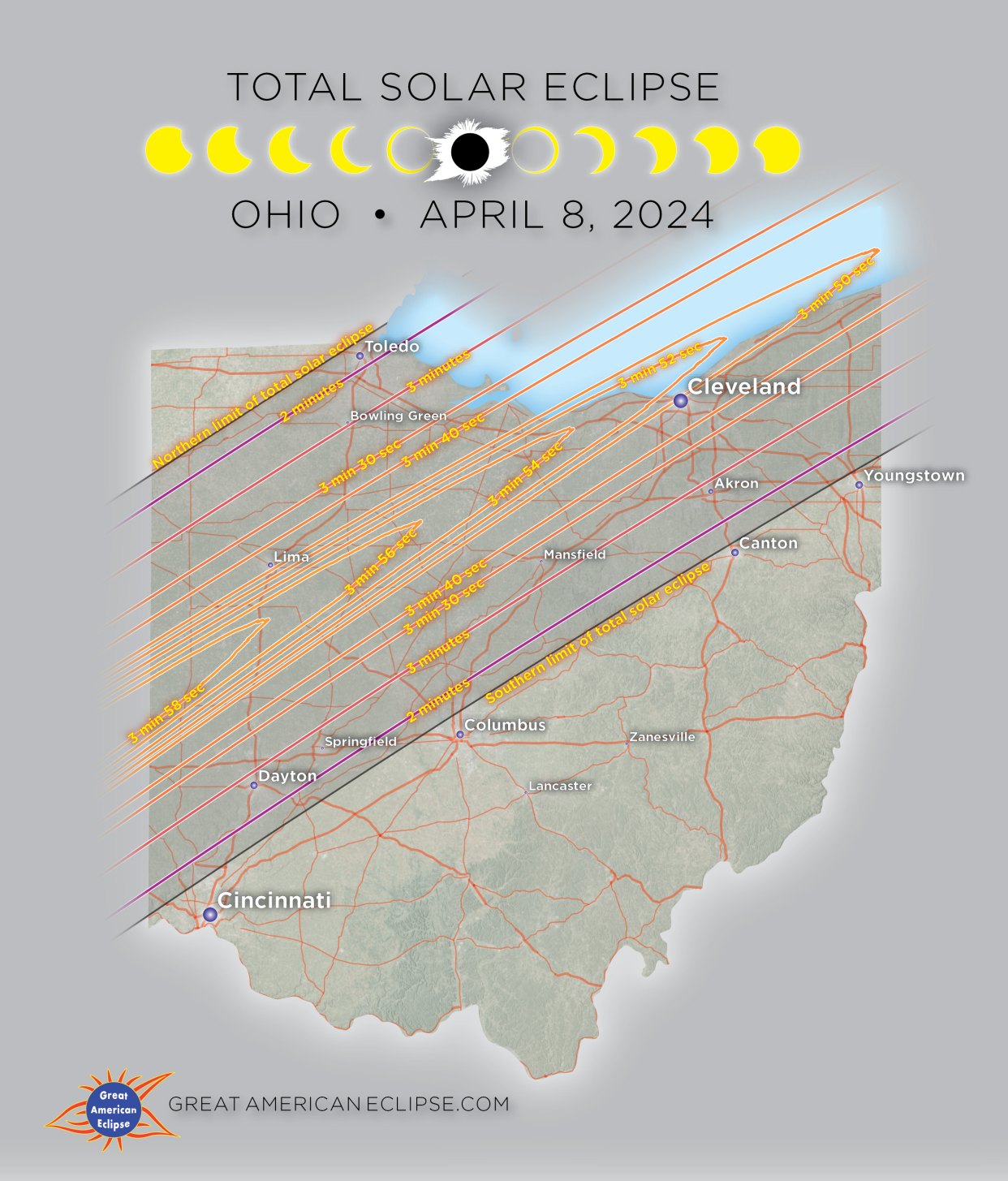Solar Eclipse weather: What the Farmer's Almanac predicts for Ohio during the rare event

How does the man on the moon cut his hair?
Eclipse it.
If you're wondering what that hairstyle looks like, you'll have a chance to see it for yourself on April 8. There will be a total, once-in-a-lifetime solar eclipse that crosses over the entirety of North America.
For Ohio, the eclipse's path will cross the state from the southwest to the northeast, marking the first time the state gets to experience the planetary phenomenon in over 200 years.
Schools across central Ohio are already announcing they won't have classes.
Campers are getting curious and state parks are pulling out all the stops as they prepare for the onslaught of curious onlookers for the special celestial event.
When is the next solar eclipse?
The total eclipse will pass over Ohio at 3:08 p.m. EDT and end at around 3:19 p.m.
Where is it best to see the solar eclipse 2024?
The entire event should last about three minutes and 40 seconds for parts of the path, and will pass through cities such as Toledo, Bowling Green, Lima, Mansfield, Akron, Cleveland, Springfield and Dayton.
Columbus might not be in the direct or even indirect path, but getting a good vantage is only a short trip north. But if you aren't preparing, you might be too late. Thousands of people, including some from out of state, will be outside with their special glasses to witness it.
Texas and Arkansas are considered the prime states for eclipse viewing, as it looks like there will be clear skies, according to the Farmer's Almanac.
What's the Ohio weather going to be during the eclipse?
If you've lived in Ohio, then you're no stranger to having your stargazing adventure or special celestial event spoiled by overcast skies and bad weather.
However, if you live in the Ohio valley and the Farmer's Almanac is to be believed, there is the possibility of clouds and rain. For most of the remainder of the country, there will be dry and clear conditions, making for prime eclipse viewing.
According to 10-year data on the National Weather Service website, the minimum and maximum temperatures in Columbus for this date have varied since 2014.
The average maximum temperature for this date is 60.6 degrees, while the average minimum temperature for this date is 42.2 degrees. Since 2014, there was never more than an inch of rain, with the highest being 0.6 inches in 2020.
Date | Maximum Temperature | Minimum Temperature |
April 8, 2014 | 62 | 44 |
April 8, 2015 | 67 | 54 |
April 8, 2016 | 41 | 30 |
April 8, 2017 | 61 | 32 |
April 8, 2018 | 43 | 25 |
April 8, 2019 | 71 | 57 |
April 8, 2020 | 74 | 53 |
April 8, 2021 | 78 | 59 |
April 8, 2022 | 51 | 35 |
April 8, 2023 | 58 | 33 |
@ShahidMeighan
smeighan@dispatch.com
This article originally appeared on The Columbus Dispatch: Solar Eclipse weather: What history says to expect in central Ohio
